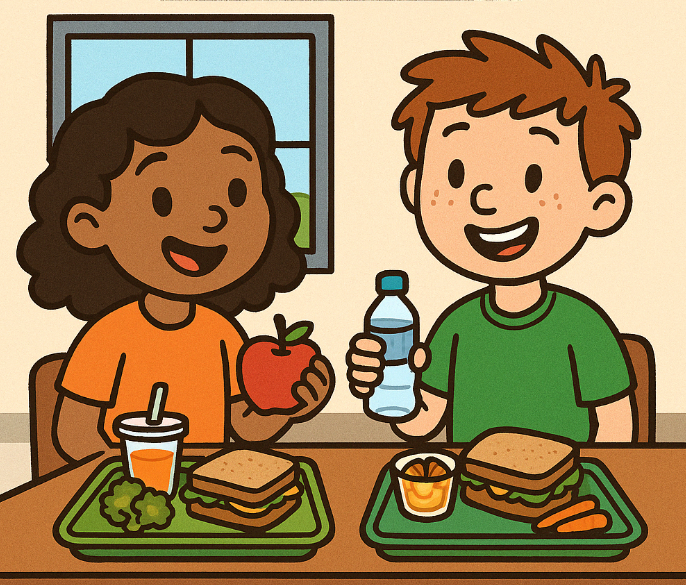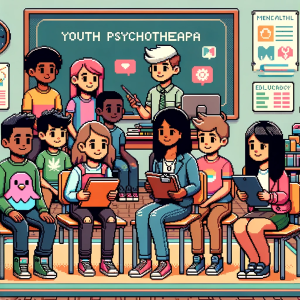
Why School Lunch Lessons Might Be the Key to Better Mental Health
“Wait—you mean they still think healthy eating is just knowing what a vegetable is?”
That was the stunned reaction of a school counselor sitting in on a ninth-grade health class. Students had just finished a lesson on food groups, calorie counts, and sugar content. The teacher quizzed them. The kids gave the right answers. But when lunchtime came? They all rushed to the vending machines.
It’s a moment that echoes across classrooms worldwide—and one that reveals a deeper truth: Knowing something and actually doing it are two very different things. Especially when you’re a teenager, juggling hormones, homework, and a growing need for independence.
But what if we’ve been teaching nutrition all wrong?
From Kale to Confidence: Rethinking Food Education
A new Dutch study is flipping the script on traditional food and nutrition programs in schools. The big finding? Most programs focus on dumping facts—what researchers call “knowledge transfer”—without helping students connect food choices to their identity, emotions, or real-world challenges.
And here’s the kicker: when we do focus on those things—on who teens are becoming, what they believe in, and how they learn best—school food programs don’t just improve diets. They may also boost confidence, motivation, and even mental health.
Why This Research Matters (More Than You Think)
Let’s break this down in plain English. The study analyzed 14 secondary school food programs across the Netherlands. The researchers weren’t just looking for what was taught—they were looking at how it was taught, why, and what stuck.
Here’s what they found:
- Almost every program focused on facts and skills: What’s a whole grain? How do you read a food label? How many grams of sugar is too much?
- Very few tackled the deeper stuff: How does food make you feel? How do your friends influence your choices? Can what you eat reflect who you are—or who you want to be?
More critically, the programs that worked best used what researchers call activating learning methods—things like group challenges, real-world projects, and opportunities for reflection.
Instead of lecturing teens about fiber, they asked them to redesign their school cafeteria. Instead of showing slides about meat alternatives, they had students create a plant-based burger.
Why does that matter? Because doing is believing. And in adolescence—when identity is in flux and peer pressure is high—belonging is everything.
Mental Health on the Menu
Here’s where the mental health connection comes in.
We know that adolescence is a critical time for mental well-being. Anxiety, depression, and stress levels skyrocket during these years. At the same time, teens are developing a sense of who they are—and who they want to be.
So what happens when food education becomes part of that identity-building process?
Well, according to the research, not much… yet. But it could. And that’s the opportunity.
Right now, most school food programs miss the mark. They don’t engage with students’ identities, emotions, or aspirations. They focus on facts, not feelings. But by shifting the focus—by helping students see healthy and sustainable eating as part of who they are—we could support resilience, not just nutrition.
That means less shame and more empowerment. Less fear about “bad choices,” and more confidence to define one’s own values. That’s huge for adolescent mental health.
What Works: Lessons from Dutch Classrooms
So, what did the most promising programs have in common?
✔ Experience-Based Learning: Think taste tests, food labs, and real-world design challenges—not lectures.
✔ Student Voice and Choice: The best programs gave teens the mic. Students debated, reflected, and shaped projects around their own lives.
✔ Connection to the Real World: Instead of talking about far-off health goals, lessons focused on current realities—like advertising tricks, peer pressure, and grocery budgets.
✔ Emotion and Identity: Though rare, some programs helped students reflect on how food affects mood, energy, and even social identity. One teacher put it perfectly: “If they see food as a way to be part of the solution—not the problem—they start to own it.”
How Can We Do Better?
Let’s be real—this isn’t just about vegetables. It’s about values. About helping teens become the people they want to be. And schools are in a unique position to lead that change.
If you’re a parent, teacher, or school leader, here’s what you can do:
- Ask for more than just food facts in your school’s curriculum. Push for programs that include identity, emotion, and real-world application.
- Support programs that are co-designed with students, not just delivered to them. Teens need to feel like partners, not passive recipients.
- Reframe food education as mental health education. Eating isn’t just about nutrients—it’s about control, belonging, and confidence.
What’s Next? A Call to Action
We can’t fix adolescent mental health or climate change overnight. But we can start by shifting how we talk about food in schools.
Want kids to eat better? Help them see how their choices reflect who they are. Want them to feel stronger and more confident? Let them lead, build, and shape solutions. Want to build resilience? Start by building relevance.
Because the truth is: a healthy diet isn’t just what’s on the plate—it’s what’s in the mind.
Let’s Talk About It
💬 What’s the biggest mental health challenge you see in schools today?
💬 How can schools better support students’ emotional well-being through food and nutrition education?
💬 What’s one insight from this blog that made you rethink your role as a parent, teacher, or advocate?
Share this with your school counselor, your PTA, or your district wellness team.
The future of school food is more than healthy—it’s personal.


